Days before going to the hospital in Rome in February 2025, Pope Francis sent a very strong rebuke to American bishops for their tepid response to the mass deportation orders of the Trump administration. The letter unequivocally condemned the actions of the US government. It was eloquently grounded in Catholic social teachings and scripture, clearly […]
Blog
IDF imposes safety curfew across all military units
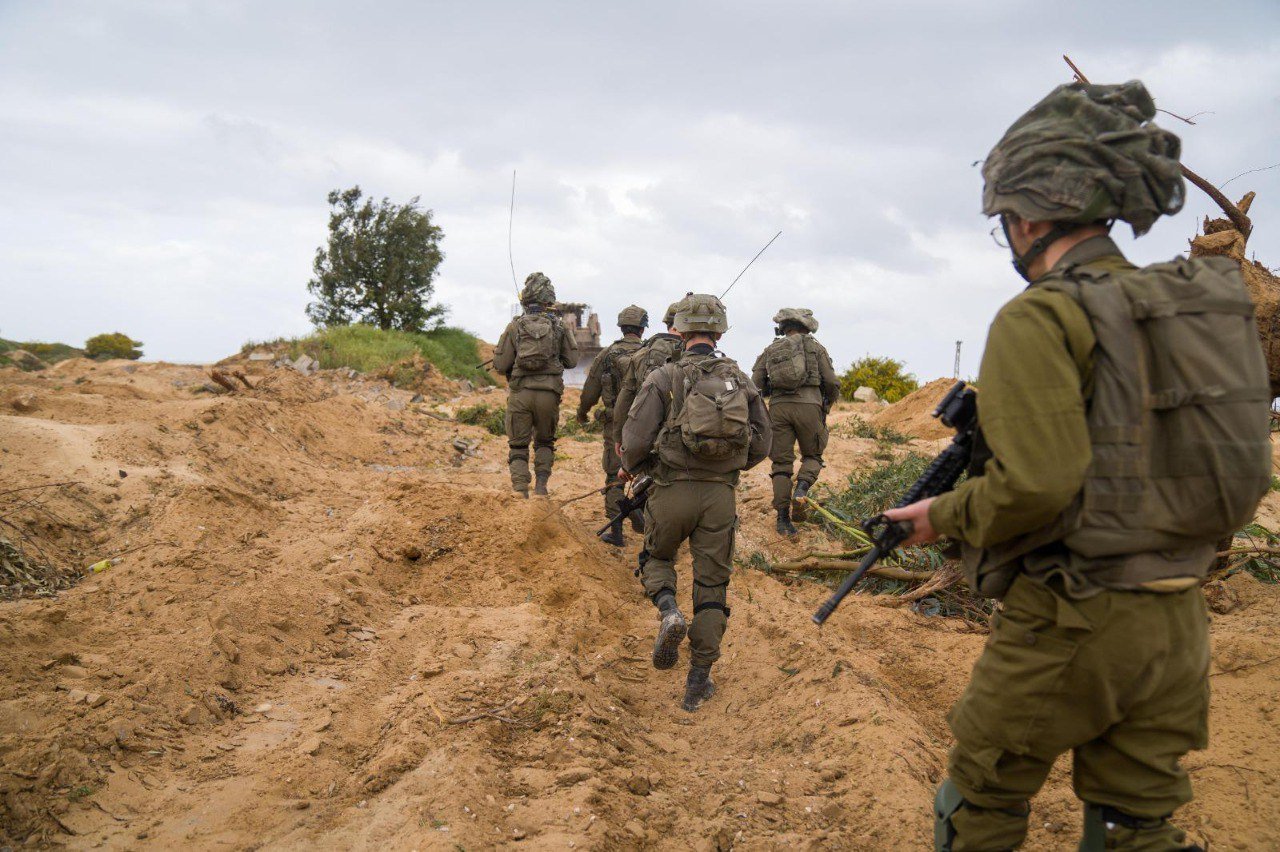
The IDF has suspended routine and non-essential activities during the curfew to focus on safety inspections, operational reviews, and targeted training.
By JNS
The Israel Defense Forces has imposed a safety curfew across all military units, effective immediately, the military confirmed to JNS on Sunday.
The curfew, reported by Hebrew media earlier in the day, follows a string of recent accidents in various IDF units, some of them fatal.
These reportedly include the accidental discharge of a round from an armored personnel carrier, a vehicle falling into a ditch, a vehicle driving over a landmine in northern Israel, and a soldier falling into a cistern.
The IDF has suspended routine and non-essential activities during the curfew to focus on safety inspections, operational reviews, and targeted training.
The measure is expected to remain in place until at least Tuesday to allow time for a comprehensive assessment of procedures and the reinforcement of safety protocols.
The IDF characterized the curfew as a proactive step to safeguard personnel amid ongoing operational activity.
The post IDF imposes safety curfew across all military units appeared first on World Israel News.
Gazan, who accused Hamas of rape, charged with espionage
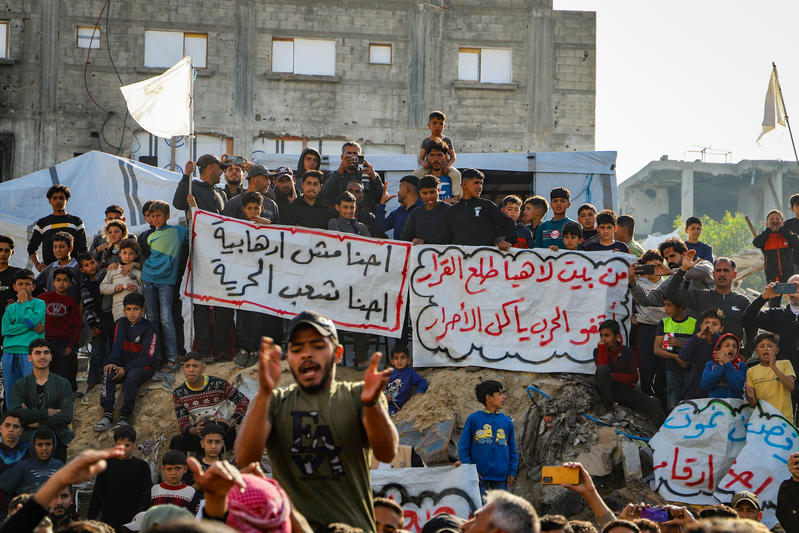
The report stated that the man had criticized Hamas on social media via a fake account.
By Shachar Kleiman, JNS
A Hamas security official reported in the past 24 hours that a Gaza resident had been arrested on charges of spying for Israel and attempting to collect intelligence on Israeli hostages held in the Strip.
According to a statement quoted on one of Hamas’s platforms, the alleged “spy,” identified only as T., was detained several months ago after being spotted “acting suspiciously” near garbage containers in one of Gaza’s neighborhoods.
Under Hamas interrogation, the detainee was forced to “confess” to establishing contact with Israeli intelligence back in 2022, after being approached by an Israeli officer.
According to the detainee, the Israeli officer posed as the head of a foreign media organization seeking to gather testimonies and stories from Hamas rivals in Gaza.
The report stated that the man had criticized Hamas on social media via a fake account.
This, combined with the nature of the charges, suggests the arrest was politically motivated, aimed at silencing dissent through false accusations and intimidation.
During the interrogation, the detainee was also coerced into “admitting” that he had received money from several foreign countries in exchange for “fabricated stories” about Hamas’s conduct, alleging theft, murder, and rape against residents of the Strip.
A commander in Hamas’s internal security apparatus said the group had intelligence assessments regarding Israel’s efforts to locate the hostages.
“We tracked numerous signs, including the behavior and movements of collaborators. These efforts are what help us thwart such operations and preserve the safety of the prisoners,” the commander said.
As reported, the Palestinian man was forced to confess following an investigation by Hamas.
Previous reports have indicated that the organization’s terrorists routinely subject detainees to violent torture, leading them to confess to any charge.
It is worth noting that in recent weeks, the terrorist group has been actively suppressing protests that erupted in northern Gaza demanding its ouster.
The post Gazan, who accused Hamas of rape, charged with espionage appeared first on World Israel News.
WATCH: Hamas releases footage of RPG attacks on armored IDF vehicles

The footage shows multiple ambushes by concealed Hamas terrorists firing rocket-propelled grenades at IDF tanks and D9 bulldozers, before retreating into underground tunnels that were later destroyed by the IDF.
Hamxs releases footage of an attack on IDF armored vehicles.
This is one of the first times they’ve shown themselves emerging from hiding. pic.twitter.com/rpm3lvLAfL
— Open Source Intel (@Osint613) April 20, 2025
The post WATCH: Hamas releases footage of RPG attacks on armored IDF vehicles appeared first on World Israel News.
How Israel destroyed Assad’s Syrian Navy
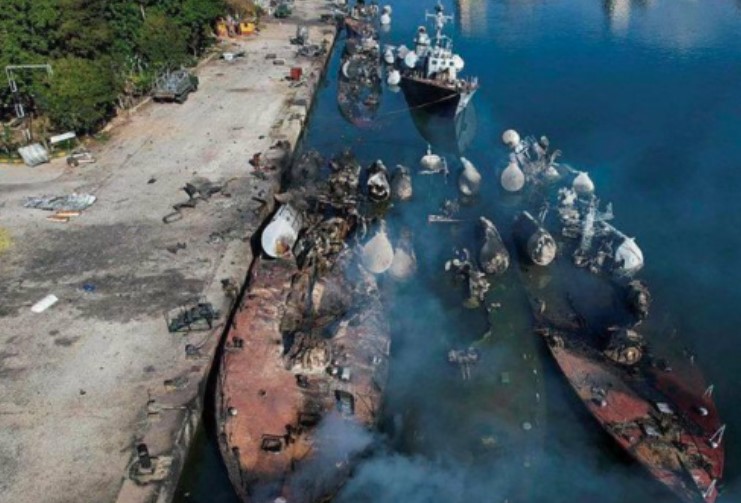
In Operation “Arrow of Bashan,” Israeli forces struck 15 vessels at Syria’s Latakia port, targeting missile boats suspected of carrying long-range Noor and Styx missiles that risked falling into hostile hands.
By Eyal Levi, JNS
In Israeli Navy textbooks, the “Battle of Latakia” during the early hours of the 1973 Yom Kippur War is a staple of military heritage.
Israeli missile boats sailed to the northern Syrian port and sank five Syrian warships, returning unscathed. It was the first historical engagement in which both sides used surface-to-surface missiles.
“It was a historic battle,” emphasized Col. (res.) Udi Erel, then a young captain and operations officer of Flotilla 3, which carried out the mission.
“Two hours of fierce exchanges that established a 1973 wartime fact–any Syrian or Egyptian vessel that entered the sea never returned to port.
“The Navy relies heavily on past traditions. Once, in such victories, it was customary to place a broom atop the mast to symbolize that the sea had been ‘swept clean.’ But the flotilla commander, Micha Ram, refused out of respect for the enemy and to signal that the mission was not yet complete,” said Erel.
Amid the chaos of the Swords of Iron War in Gaza, the “Arrow of Bashan” operation launched on Dec. 8, 2024, after the fall of the Syrian regime, has nearly faded from public memory.
Fearing that strategic Syrian weapons left behind would fall into hostile hands, a joint operation was launched involving ground, naval, and air forces, ultimately neutralizing 80 percent of the capabilities left by Assad’s military.
As part of the operation, Flotilla 3 returned to Latakia, the site of its Yom Kippur War legacy, and sank 15 vessels that carried weaponry that could have posed a serious threat to Israeli national security.
“In the end, we’re walking in the paths of our predecessors,” said Maj. T., commander of Israeli Navy ship INS Yaffo, which took part in the operation.
“I spoke to the sailors before the mission about the Battle of Latakia, because without historical awareness, we are nothing. Just as the IDF 7th Armored Brigade draws strength from the Battle of the Valley of Tears [on the Golan in 1973], we too must know our past. In the end, it’s the spirit that wins battles.”
Maj. T. welcomed us aboard the Yaffo. Just 28 years old, he took command eight months ago.
With him were two strike officers from neighboring vessels in the flotilla who had participated in the operation: Lt. T. from INS Herev, who had still been in naval officers’ training when the war erupted and found himself at sea by Oct. 8; and Lt. G., 24, who had joined INS Kidon only a week before the war began.
“I didn’t even know the names of the sailors,” she said, laughing.
Lt. T., 23, related, “When I first went out to sea, I still didn’t know the fate of two classmates who were at the Nova music festival and listed as missing. We returned from the mission after a week, and I immediately called my sister. She told me their bodies had been found.
“Throughout the war, we kept thinking about how to maintain our combat intensity while staying connected to home.”
The missile boat flotilla based in Haifa includes Saar 4.5-class missile boats, the smallest and oldest of the fleet, with the first of its type launched in the early 1980s. Measuring 61 meters in length and housing about 60 crew members, it’s mainly used for ssions.
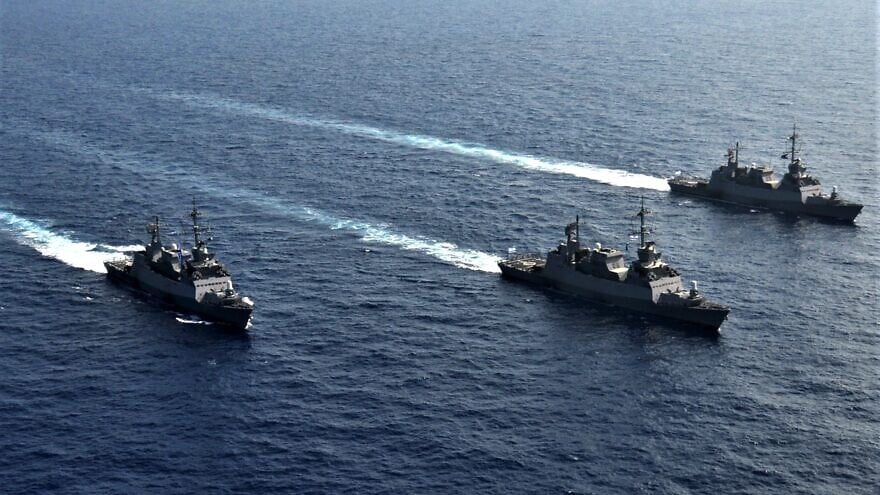
Three Sa’ar 5 class missile corvettes of the Israeli Navy cruise off the shore of Israel during a 2021 training exercise. Credit: IDF Photo/Flickr via Wikimedia Commons
Then there’s the Saar 5-class ship, in service for about 30 years, 85 meters long and considered multi-mission. But the standout vessel is the futuristic Saar 6, just six years into service and resembling a spaceship at 89 meters in length.
“The Saar 6 is the crown jewel,” admitted strike officer Lt. T., aboard the Herev, one of the older models. “They’re the newest and primarily used for defense, but when we head to sea, each ship has its own specific mission.”
Strike officers are responsible for the ship’s precision weaponry, arms capable of engaging distant targets. During the war, ships often made the long journey from the north to the Gaza Strip to guard gas rigs. It was non-stop.
“Imagine being a combat sailor in the flotilla, exposed to four different combat arenas and having to master them all,” said Maj. T. “There’s no debating professionalism here. Our ability to reach every front demands mental flexibility from each fighter.”
The window of opportunity
Operation “Arrow of Bashan” in Syria caught the sailors completely by surprise. Nothing indicated that an offensive in enemy territory was imminent, except at the highest levels of the military, where concern over the collapse of Bashar Assad’s regime emerged in early December.
The greatest fear was the unknown. Israel’s security establishment had no idea how Syria’s new leadership would view Israel, particularly since the rising figure in Damascus, Ahmad al-Sharaa, had a jihadist past and deep ties to the terrorist organization Al-Qaeda.
“The operation started as a surprise,” confirmed Lt. Col. D., head of Naval Superiority, responsible for coordinating firepower and strike planning. “The operations director at Navy HQ called us all in on Friday for a situational briefing after the coup began.
“We pulled out contingency plans listing all strategic weapons that could fall into hostile hands. My division handles precise targeting–where to strike, how–and we coordinated with the IDF General Staff and Military Intelligence’s Operations Division.”
What was the threat posed by the Syrian Navy?
“Missile boats that could fall into hostile hands. Each missile on those ships carries dozens of kilograms of explosives and could pose a threat to Israeli civilian or military vessels. The fall of the regime opened a brief window of opportunity to remove that threat.”
On Saturday, Navy HQ continued working on the strike plans. On Sunday morning, Dec. 8, an order went out to Flotilla 3: within hours, they were to head to Latakia port in northern Syria to destroy Syrian vessels deemed a threat to national security.
“INS Kidon was in a ‘stand-down week,’” said Lt. G. “Every so often, a ship docks for maintenance that can’t be done during normal operations. Ours was mid-refit, the kitchen had been removed for replacement. Then Sunday morning, we got the order: ‘You’re sailing this afternoon.’”
Lt. G. was aboard the Kidon reviewing the target sheet. “I knew what each target was and where it was docked,” she said. “I sat with the mission commander and my controller, and we planned the best execution method.”
Operation “Arrow of Bashan” concentrated primarily on the military port in Latakia and the nearby Mina al-Bayda port. Fifteen vessels were targeted, some of them Osa 2-class missile boats, others Tir 2-class Iranian-manufactured ships modeled on a North Korean missile boat design.
The primary concern was that among the weapons onboard were Noor missiles with a range of 200 kilometers and Styx missiles with a 90-kilometer range, which could end up in the wrong hands.

Israeli soldiers operating on the Syrian side of the border fence, Dec. 15, 2024. Photo by Jamal Awad/Flash90.
In the afternoon hours, Flotilla 3 set sail, heading north in a secure and quiet formation. On the way, they could see the lights of Lebanon, and even Cyprus didn’t seem far. At the time, Russian vessels were also docked at Tartus port, just south of Latakia, a base used mainly for maintenance.
“When you’re sailing through a hostile area, there are threats I can’t even talk about,” said Maj. T., commander of the Yaffo. “We know we’re being targeted, and every fighter heading out to sea understands that returning home is not a given.”
Joint force
During the voyage, a new directive was issued: before striking the Syrian vessels, the flotilla would need to take out surface-to-air missile systems scattered throughout the area, to create an aerial corridor for Israeli Air Force jets that would simultaneously strike in Syria.
“We created a fusion of sea, air, and ground forces that was a game-changer, a new X-factor in combat,” said Maj. T. “This cooperation played out in corridor openings, targeting terrorists, and everything you can imagine.”
The missile boats struck the surface-to-air batteries. Then the fighter jets flew in through the corridor, hitting missile warehouses and launchers positioned onshore and threatening Israeli vessels. With air defenses down, all was ready for the operation’s grand finale—sinking the Syrian navy fleet.
On Monday, Dec. 9, around 6 p.m., under the cover of darkness, 15 Syrian vessels were destroyed in the ports of Latakia and Mina al-Bayda.
Lt. T., the strike officer aboard INS Herev, recalled the exact moment when the missiles left the ship en route to their targets. “Everything went by the book,” he said.
Two hours ashore
While the operation was underway, Israel Navy Commander Maj. Gen. David Saar Salama and other senior officers were in the control center monitoring real-time assessments. It quickly became clear that the hits were precise and the mission goals were achieved.
“To all our forces, at sea and onshore, I want to express my deep appreciation,” Salama said over the communication system as the ships sailed back. “It was executed professionally.”
“For us, the mission went smoothly,” said Lt. Col. D., head of Naval Superiority, who had overseen the operation remotely. “We had the honor of being part of history, of eliminating 80 percent of the Syrian military’s capabilities.”
By Tuesday morning, the vessels reached Haifa Port, where top brass awaited them. “Navy Commander Salama greeted us and commended the clean execution,” Maj. T. recalled. ” We refueled, grabbed two crates of fruits and vegetables, and set out again on a defense mission. We were ashore for less than two hours.”
For the Israeli Navy, this war has meant non-stop operations. There’s no downtime, no rotations. It’s simply from one mission to the next.
“There are fighters who’ve been aboard the ship since before Oct. 7, and they’ve been here the entire war,” said Maj. T. “Some were fresh high school graduates at the start. We don’t have a reserve force that rotates in to replace us.”
Staying under the radar
Unlike the many heroic stories that surfaced during the war, the Israeli Navy largely stayed in the shadows, maintaining secrecy. Even in this interview, the information had to be extracted gently.
Lt. G. even shared that her own family barely knew what a major operation she had taken part in.
“Honestly, I was a bit disappointed that the operation’s story was published,” she admitted. “It’s important to keep our capabilities quiet, so we can use them again.
“On the other hand, people rarely hear about the Navy, and it’s important to give our sailors the recognition they deserve.”
These young officers will eventually learn that such stories are the building blocks of legacy, and that even closely guarded secrets sometimes make their way into the headlines.
“They’re amazing, and what they did was amazing,” said Col. Erel, who fought in the 1973 Battle of Latakia. “It was a clean, professional strike with short notice. True, in our time we were under direct fire, but the surgical precision won out in both cases.”
Maj. T., agrees. He’s certain that one day, this operation will be taught to new recruits. “It’s our job to ensure this mission is firmly anchored in the Navy’s heritage. Just as they spoke to us about the history of the Navy and how it achieved superiority during the Yom Kippur War, I believe that in 20 years, they’ll know exactly what we did.”
The post How Israel destroyed Assad’s Syrian Navy appeared first on World Israel News.
WATCH: Muslim Brotherhood leader – ‘The anti-Israel protest movement across the world is exceptional, we expect them to continue’

Kuwaiti Muslim Brotherhood leader Tareq Al-Suwaidan praised the anti-Israel protests and urged Muslims in the West to keep mobilizing, declaring that peace with the enemies of Allah voids the duty of jihad.
#ICYMI: Kuwaiti Muslim Brotherhood Leader Tareq Al-Suwaidan – Banned from U.S. for Terror Links – Urges Muslims in the West: We Watch Your Demonstrations on the “Blessed Al-Jazeera TV” and Expect You to Continue; Peace with the Enemies of Allah Nullifies Jihad pic.twitter.com/4fszeubCUi
— MEMRI (@MEMRIReports) April 20, 2025
The post WATCH: Muslim Brotherhood leader – ‘The anti-Israel protest movement across the world is exceptional, we expect them to continue’ appeared first on World Israel News.
UN hid details of official’s travel funding amid alleged pro-Hamas financing
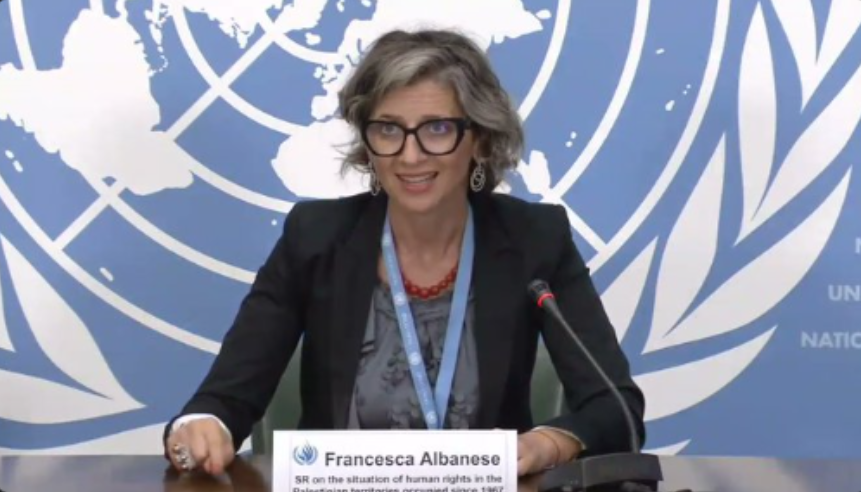
UN rapporteur Francesca Albanese repeatedly insisted the trip, estimated by the UN Watch NGO to cost around $22,000, was paid for by the UN, calling claims to the contrary “egregiously false.”
By i24 News and Algemeiner
The United Nations Human Rights Office appears to have disseminated intentionally deceptive information in an attempt to cover up travel funding that pro-Hamas organizations provided to a UN official.
UN special rapporteur for Palestinian rights Francesca Albanese took a politically-charged trip to Australia and New Zealand in November 2023.
The trip included a fundraiser for a Palestinian lobby group, participation in media events, as well as meetings with pro-Palestinian politicians and civil society members, and pushing New Zealand’s sovereign wealth fund to divest from Israel.
Albanese has been accused of antisemitism by the American, French, and German governments, among other entities.
Now, the Australian Friends of Palestine Association, which praised Hamas terror mastermind Yahya Sinwar as “incredibly moving,” claimed publicly that it had “sponsored” Albanese’s visit, and Free Palestine Melbourne, the Australian Palestinian Advocacy Network, and Palestinian Christians in Australia stated that they “supported” the trip. All four are lobbying groups.
The Israeli i24NEWS channel asked various UN officials and entities for months whether pro-Hamas groups actually did fund the trip.
Albanese repeatedly insisted the trip, estimated by the UN Watch NGO to cost around $22,000, was paid for by the UN, calling claims to the contrary “egregiously false.”
Finally, in July last year, the UN Human Rights Office, acknowledging it was fully aware of documentation that pro-Hamas groups had said they sponsored or organized the trip, told i24NEWS that, “With respect to the Australia trip by the Special Rapporteur, her travel was funded by the UN.”
They ignored requests to provide any documentation showing that to be the case.
Since then, a six-person panel of Albanese’s peers, who have long attacked her accusers, was assigned the task of investigating a host of accusations against Albanese.
In a letter written last month to UN Human Rights Council President Jurg Lauber by that panel, known as the UN Coordination Committee of Special Procedures, they finally acknowledged Albanese had taken “partial external funding for internal trips within Australia and New Zealand.”
i24NEWS asked the media offices for UN Human Rights and Special Procedures for clarity on what seemed to be contrary claims.
Like former US president Bill Clinton’s cagey testimony in the Lewinsky affair, when he famously remarked, “It depends upon what the meaning of the word ‘is’ is,” for the UN Human Rights Office and Albanese, it apparently depends upon what the meaning of the word “to” is.
The Special Procedures office told i24NEWS: “With regard to the Special Rapporteur’s visit to Australia, her travel was funded by the United Nations regular budget. The Coordination Committee of Special Procedures assessed the allegations concerning partial external funding for internal travel (the bolding of the words is theirs) within Australia and New Zealand and concluded that there was no breach of the Code of Conduct. The Committee noted that it is common practice for conference organizers to cover the participation costs of mandate holders, and such arrangements do not constitute a violation of the established standards.”
With that, the UN finally conceded Albanese had in fact received external funding after all.
In follow-up conversations, it became clear: the UN was drawing a distinction between funding for travel TO a country, and funding for travel WITHIN a country – a bizarre distinction they failed to make for a year and a half, almost certainly to avoid discussing the topic of Hamas-supporting groups paying for a UN official’s anti-Israel business travel.
Even with all this, the UN Human Rights Office continues to ignore requests to clarify which group or groups funded this trip, and how much they contributed.
Accused by i24NEWS of lying, the Special Procedures Media Office said it was a “regrettable and unfair mischaracterization,” though it still made no attempt to reconcile why the UN made no previous mention of external funding, or why the funding for Albanese’s trip “to” Australia should be counted differently from “external funding for internal travel.”
Asked during a press briefing whether UN Secretary-General Antonio Guterres would condemn UN spokespeople for intentionally misinforming the media and whether Guterres would support finally releasing the funding information surrounding the trip, Stephane Dujarric, Guterres’ spokesperson, said, “We support transparency in the activities of any official affiliated with United Nations.”
The post UN hid details of official’s travel funding amid alleged pro-Hamas financing appeared first on World Israel News.
Inside Israel’s toughest prison wing, housing the worst Nukhba terrorists

Underground conditions include three men to a tiny, bare cell, one hour a day for exercise outside, and only basic food at meals.
By Batya Jerenberg, World Israel News
The toughest prison wing in Israel is dedicated to 84 of the worst of Hamas’s Nukhba terrorists captured during and after the Hamas-led invasion of Israel on October 7, 2023, as they await trial for their war crimes.
Five more men belong to the elite Radwan force of the Lebanese Hezbollah terrorist group who were captured in Lebanon.
The Israel Hayom newspaper reported on Friday about the Rakefet wing of the Nitzan Magen prison in Ramle, which is deep underground and can only be accessed by descending a winding staircase and passing through several heavy, automatic metal doors.
There are three to four men in each bare cell that contains a small shelf on the wall, a bunk bed and a single metal bed solidly bolted to the floor, with a thin mattress and blanket provided only at night.
If a fourth man is put in the cell, he sleeps on the floor.
There is no entertainment, as can be found in regular prisons, no books, no television or radio, no cards.
There is no privacy. Closed-circuit cameras surveil the cells, and there is no curtain to hide the shower. The toilets are a single block, with no moving parts that can be broken off.
While cold water is always available, hot water is only provided for seven minutes each day.
They are provided with three meals a day that contain the minimum nutrients demanded by international law, given on plastic plates with no cutlery.
Whenever the window slot in the door is opened, they must lie on the floor in the Muslim praying position, but with their hands behind their backs.
The wing is silent. Any raised voice will earn the prisoner time in isolation.
They are allowed outside for one hour each day in a small, roofed yard that lets in a small amount of sunlight. No sports equipment of any kind is provided; the prisoners can walk or do calisthenics.
Interestingly, the wing’s commander, H., told the newspaper that these conditions are not what bother the prisoners the most.
“The problem for them is the uncertainty,” he said. “They’ve been in a fog for a year and a half already. They don’t know what’s happening in Gaza, in Israel, with their families, their friends. They don’t even know what time of day it is. I think that drives them crazier than the surprise inspections that occur sometimes several times a day.”
The inspections occur at all hours of the day or night, with masked and armed guards bursting in, tying the terrorists’ hands, blindfolding them and forcing them to lie on the floor as they search for any contraband.
“We need to prevent these human diseases from attacking the staff, prevent them from attempting to escape and eliminate any possibility of suicide because they need to be held accountable for their actions,” explained Moshe Hidra, commander of the entire detention center.
“This is my sacred responsibility towards the people of Israel, towards the bereaved families and towards the hostages.”
The guards are proud of their role in keeping the terrorists cowed, and see the minimal conditions the prisoners receive as per international law as only fair, considering the horrific acts they carried out while murdering 1,200 and injuring thousands, including mass rape, beheading and burning their victims to death.
“I know who murdered an entire family and who confessed to rape,” said Hidra. “One of them, about 60 years old, directed the forces at one of the kibbutzim. They provided him with work and that’s how he rewarded them.”
It takes a high degree of mental toughness to face the terrorists day in and day out, knowing what they did to innocent men, women and children, and the guards were chosen very carefully, including from the ranks of elite fighters of the Border Police and the IDF.
H. volunteered to serve in the wing when it first opened seven months ago.
“This is my way to contribute my part to the war effort,” he said. “Doing my duty against such terrorists is a physical and emotional challenge, but it’s also a mission and proof of [my] love for the country.”
He has not told his family exactly whom he is guarding, so that they don’t worry unnecessarily, he said, adding that “maybe in a decade” he would reveal that they had been more than just “security prisoners.”
When asked if he thought any of the terrorists regretted their actions by now, Hidra immediately rejected the idea.
“No way,” he said. “They don’t regret a thing. They simply don’t understand how the IDF managed to capture them.”
The post Inside Israel’s toughest prison wing, housing the worst Nukhba terrorists appeared first on World Israel News.
Israel bars entry to left-wing French lawmakers
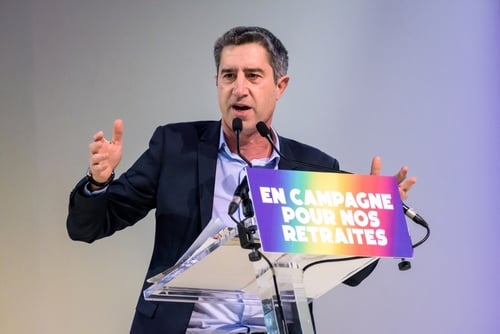
After barring far-left French member of the EU parliament and deporting two anti-Israel British MPs, Israel prevented a delegation of 27 left-wing French lawmakers and local officials from entering the country.
By David Rosenberg, World Israel News
Israel barred entry to dozens of French lawmakers and local officials earlier this month, delegation members claimed on Sunday.
A total of 27 members of the French Parliament and other officials had been slated to visit Israel earlier this month, as part of a five-day tour organized by the French Consulate in Jerusalem to “strengthen international cooperation and the culture of peace,” the group said, according to a report by the French news agency AFP.
The delegates claimed the delegation had been given entry visas in March, yet Israeli border officials revoked them two days before the visit began.
“For the first time, two days before our departure, the Israeli authorities canceled our entry visas that had been approved one month ago,” the delegates said. “We want to understand what led to this sudden decision, which resembles collective punishment.”
“Deliberately preventing elected officials and parliamentarians from travelling cannot be without consequences.”
The planned delegation included 17 lawmakers from two far-left factions of the French Parliament, including the Social and Ecologist Group and the Communist Party.
The parliamentary factions represented in the delegation have all called for Palestinian statehood for decades, the group said.
François Ruffin, a Social and Ecologist Group deputy in the National Assembly, the lower chamber of the French Parliament, was among those denied entry, along with Alexis Corbiere and Julie Ozenne.
Senator Marianne Margate, a member of the Communist Party, was also slated to take part in the tour, along with Soumya Bourouaha, a deputy in the National Assembly.
Last year, Bourouaha made a solidarity visit to the Gaza border via Egypt to show support for the people of Gaza.
The cancellation of the entry visas came days after Israel denied entry to two anti-Israel far-left British MPs after they landed at Ben-Gurion International Airport on April 5, forcing both lawmakers to board return flights to the UK.
In February, European Parliament member Rima Hassan was barred from entering Israel over her support for the anti-Israel Boycott, Divestment and Sanctions movement.
The post Israel bars entry to left-wing French lawmakers appeared first on World Israel News.
Jean-Luc Mélenchon: “We Need a New Civic Morality”
As he visits the US for the first time, Jean-Luc Mélenchon, leader of La France Insoumise, writes about the collapse of triumphal capitalist narratives and sets out an alternative vision for humanity that can save us from a dystopian future.

Jacobin and Verso are hosting an event with Jean-Luc Mélenchon at CUNY Graduate Center tonight to celebrate the launch of his new book, Now, the People! Revolution in the Twenty-First Century.
In the last century, the story of history’s progress was built on the idea that it would pass through a series of stages of material development. These stages were fixed, predetermined, and similar regardless of place, culture, or past history. This story indicated a path from underdevelopment to the happiness of an efficient, democratic market economy.
Various benchmarks were proposed along the way: the supposed results of material production. But the real criteria of success were not the spread of education, the status of women, literacy, human life expectancy, the fate of animals,. or even the quality or life span of the products that we use. For most branches of political thought, all these were just automatic by-products of growth and the flow of goods and money.
Until the beginning of the new millennium, almost no political camp had taken stock of the inherent contradiction in this way of seeing things: its quest for infinite demand in a world of finite resources. This objection surely did gain traction in the human and physical sciences, but both right-wing politics and the traditional left shrugged their shoulders.
But now the reality has become undeniable. The narrative of triumphant productivist modernity is dead. It has been replaced by nothing more than empty propaganda.
The Poverty of Productivism
Later in the century, another vision of the world was — at last — officially expressed. This came only after a long period of social struggle and reflection that began with the Club of Rome in the early 1970s. In 1987, the United Nations Development Programme (UNDP) published Our Common Future, the report by former Dutch prime minister Gro Harlem Brundtland. Five years later, in 1992, the first Earth Summit was held in Rio de Janeiro, Brazil.
Brundtland’s report replaced quantitative assessments with a qualitative vision. It proposed new criteria of success: “human development criteria,” to be achieved within the framework of“sustainable development.” Here the benchmarks for evaluating government action changed. They still produced a ranking of the different nations’ performance, but these were no longer based on growth and GDP.
The quantitative dimension had to take a step back, in favor of an assessment of the qualitative progress in the human condition. Of course, it is now well understood that this discourse has limits of its own. But it did mark a step forward in the mental universe of politics. In my own case, it prompted a break with a whole way of thinking — and offered an alternative to the traditional, entirely quantitative focus of the wing of the Left to which I had belonged.
I adopted this new approach in my first book, À la conquête du chaos. Twenty years later, I called the program on which I was running in the French presidential election “L’avenir en commun” (Our Common Future), echoing the title of the UNDP report. It was from there that I had deduced the idea of a general human interest. And no longer did I confuse this idea with the interests of the working class alone or just with the development of the productive forces.
Today I see the expression “in common” as extending the scope of this general interest to embrace all living things. After all, is not all life indivisibly linked by the need to halt the destruction driven by finance and productivism?
Another Narrative Is Possible
Sometimes a narrative of history on which we long relied becomes exhausted. Even if this is unbeknownst to us, this also changes our relationship with the world. It forces us to reposition ourselves. We can find many past instances of this.
The humanist thinkers of the Renaissance felt like they had been pitched into terra incognita when they learned of the existence of a continent unmentioned in the Bible. Worse still, on that continent there were people with no knowledge of Noah or the prophets. And yet, up to that point, everything from Adam and Eve to the final apocalypse had seemed set out in writing — a narrative that also justified the political order of the time.
We face a similar challenge today. Those humanist thinkers had two centuries to work up the Declaration of the Rights of Man and of the Citizen, before the French Revolution of 1789 ushered in what the poet Johann Wolfgang von Goethe called “the modern era.” But today we are hemmed in by much shorter deadlines.
The younger generation will show its own ability to mount the necessary uprisings and pave the way for a different history. It will leave those who build their haughty power on the market ridiculous and archaic, just like those who once ruled the feudal ancien régime. A new narrative will take shape together with the new reality to which their actions give rise.
Of course, history will never come to an end, as long as there are at least a couple of human beings left. But the present moment is indeed the end of a world. It is the end of that world in which we were forced to live with suicidal ecological and social irresponsibility.
But what real reason is there to nurture such optimism? And is it enough to stir up our will to act? Looking at how things are right now, should we not instead conclude that all indicators point to collapse? Where can we find the energy to oppose this happening with all our might?
It is true that the limits of the ecosystem’s resistance are being crossed, one after another. Climate change has begun — and it is irreversible. Yet nothing seems to be able to stop the blindest form of capitalist productivism. Social and political violence against the many is spreading ever further. Similarly nothing seems to be able to interrupt the calculations of the warmongers and génocidaires.
So what now? The truth is that reality never follows inevitable paths. The real world is a world of probabilities. However small the possibility of a positive outcome, what else can we do but act to help make it happen? Why should we do less for the human community than we would do for ourselves?
We all know that we are doomed to die eventually. And yet everyone strives every day to keep going, to improve their living conditions and those of the people around them, and sometimes even those of society as a whole. So life poses only one question: Who can we help to build a different future?
Making a Commitment
In all this, we do have a guiding principle: personal commitment. That means not relying on others to achieve the outcome you want. All you have to do is act according to this principle, without worrying about getting any reward. The self-centered liberal thinks that he is doing what is best for everyone by doing what is best for himself — and calls on everyone else to do the same.
Such a perspective makes little practical sense. We cannot ignore the rest of the human community and its ways of organizing itself. For me, this liberal-egoist mindset is itself extra cause for concern. It adds to the other harmful elements of the market society that we are forced to live in.
Given the pressing — indeed, quite foreseeable — hardships ahead of us, this social egoism will hinder the solidarity and collectivism that we need to tackle the present situation. A mass culture based on “every man for himself” will weaken the overall resilience of the human community.
More broadly, social inequalities, the various kinds of discrimination and divisions driven by religious or racist hatred all undermine humans’ ability to build solidarity. So these are all additional dangers. The new collectivism of our time requires, more than anything else, that we cultivate our collective reflection, deliberation, and action.
But have you noticed? The high and mighty are no longer offering us any narrative on the bright future ahead of us. Gone are the steps toward happiness through growth, and a world in which we are guaranteed ever more freedoms! There are no grand declarations about a future of equality or of a happy society. Nor anything else.
In France, Emmanuel Macron is simply offering young people an immoral dream: to become a billionaire by taking part in the plunder. We are told that there is no future beyond an individual career plan. But from our perspective, our political commitment is about the appetite and the need — to live together.
This is neither self-sacrifice nor a career path, but real action to develop ourselves and build our future. It is a process in which personal ethics, a political program, and activism all come together. The program and the action are currently decided within the frame of our public political intervention, as part of La France Insoumise. But what about ethics and morality themselves?
There is no poetry without poets, no rebellion without the rebellious, no goodness without the generous of spirit. In general, nothing happens — however improbable it may seem at first — without someone being there to make it happen. The first source of a moral code of responsibility is personal commitment.
And to act, you need a reason to act. Where does that come from? Obviously it comes from nowhere other than oneself, from one’s own determination to act. But why? You have to breathe in order to be. This desire to be ends only with the end of life itself.
Yet there is a certain demand for coherence that stands above each of us individually. It demands that we make what we do consistent with who we are. When we cannot do this, we are sure to feel remorse and regret. But when we can pass this test, we feel satisfied and fulfilled.
We would call this hoped-for coherence “harmony,” if we saw it in a bird soaring through the sky, in a river meandering across a plain, in a flower releasing its fragrance, in a note in a piece of music, or in a smile on the lips of a loved one. This inner harmony is unachievable if the context makes it impossible. We instinctively know that. Other people are our peers, our fellow human beings. If their needs can be met, then ours can too.
The human community is our inorganic being, our body outside our body, our imagination outside our will. It does not just contain us as individual members: we ourselves express this community. This community is just as concrete as the city that binds us together as we use its many networks and connections.
Political Good and Evil
When we learn to read and write, and connect with large numbers of other people, each human being acquires a taste for individual freedom. By now, the humanist idea that everyone is their own creator has made considerable headway. The rights that are today being demanded are good proof of this.
Even when we do not want them for ourselves, we are now more accepting of the freedom of each individual to make use of them. Indicative in this regard are three fundamental rights of self-determination that are increasingly gaining recognition, at least in some societies. These are the right to voluntary termination of pregnancy, the freedom to identify as the gender of your own choosing, and the right to die when you wish.
Even insofar as these issues produce bitter debates, these shifts are testament to movements in the history of ideas and behavior. What is good for each person endowed with equal rights is good for everyone — even if you do not use that right yourself. No one is forced to have an abortion, or commit suicide, or choose a different gender, just because the law allows for it.
Other moral or religious norms that someone has taken up may dissuade them from exercising some freedom that they have gained. But in each case, an equality of rights is the basis of the desirable order of things. Here freedom of choice turns out to be the surest path toward equality. This connection between freedom and equality gives moral and ethical force to our political efforts.
When we want what is best for everyone, we want what is surely also best for ourselves. The concern to serve the general interest thus provides the basis for the quest for harmony: both the guarantee of its good intentions and the cornerstone of effective political action.
We call this quest virtue. This has nothing to do with the morality police; rather it is a political choice. Virtue is a moral code for the decision that is good both for oneself and for everyone else. But can a political program also have a moral meaning? Should we want it to?
Undoubtedly yes. Every form of social organization names some things good and others evil. It does this with its laws, but also with the projects that it sets out for the future. To plan something is to want something. And what should we want, if not good itself?
Our program calls for a break with the existing world order. It then names what is good by outlining the ecological and social transition that we need. It does this in a specific enough way to be realistic.
But it also makes clear that its intention to bring about a new direction in human history does not lock the future into any preconceived model. Still, this program does more than simply boast of its own good intentions. It also points to a political evil. It should not avoid doing so.
The world is not careening toward ecological disaster because of some sort of misunderstanding. Finance has no extenuating circumstances when it fails to do its duty in relation to society’s needs. Finance cannot be excused when it merely serves its own particular interest, in the absurd, infinite accumulation of capital.
Production really is to blame, when it works not to satisfy human needs but to speed up the circulation of money in the cycle of commodities. It is evil when it criminally passes on its social and environmental costs to other people and places. When its greed leads it to deny the fundamental biological needs of our species and of nonhumans in the biosphere, that is something evil.
Virtue as Civic Morality
If virtue is the basis of a civic morality, then we must not shy away from the questions posed by its material practice. Virtue is not a state of being that we could hope to reach, as if it were like climbing a mountain and then staying up there like hermits. Rather virtue is a path that must continually be built anew.
It is the path that we take when we question the consequences of our actions: Are they really good for everyone? Virtue cannot stop at the level of good intentions. If it did, it would turn into something of a totally different nature. It would become hypocrisy, something in which we wrap our mere inability to act. To be something real, it must necessarily be an action, in the here and now.
There can be no virtue without the virtuous. Virtue cannot be merely decreed but must be observed in reality. Virtue finds its concrete application in the way in which we live together with others.
Virtue is its own reward and is itself fulfilling. To expect something else in return would hardly be virtuous. It would turn the focus of our actions away from doing what is good and just for everyone. But virtue is not self-denial or a negation of the self. In its most fundamental principle, it is a quest for reciprocity.
The motto of the virtuous would be: “What is good for everyone is necessarily good for me.” I know that my freedom ends where others’ freedom begins, once I can see that others’ freedom ends where my freedom begins. Virtue is a deliberately chosen and actively practiced relation of reciprocity.
For this reason, it has to be based on equality. Virtue is impossible wherever one person dominates another. It does not matter whether that domination is based on prejudice or on custom and practice, as patriarchy does through the creed of social one-upmanship — or worse still, by making people act out of fear of punishment. Equality is the very oxygen of solidarity.
Reciprocity means recognizing that we each have similar needs to be met. Virtue is the ability to reconcile the principles that we apply in our own lives with the ones that we would like to see applied to other people, for our common benefit. At a time when our societies are brimming with hatred, virtue is the glue that sticks us together.
Creolization
One development stands out as the most crucial advance of our era: the rise of a single human people, united by its shared fate and its common dependence on the ecosystem. This itself provides the starting point for writing a new narrative about human history.
We need to make this the oxygen of our aspiration for a different world order. Humanity is indeed bound together, at the very least by its equal dependence on its ecosystem. This provides the objective basis for the universality of rights: we all have the same inescapable needs and must have the same right to satisfy them.
If this understanding is correct, then we will also find spontaneous material evidence of it in practice. We could do this simply by noting that there is just one human species and, indeed, one in which any person can reproduce with any other, whoever they may be. And they do so.
We could also make the simple observation that all cultures and languages make demands for freedom and universal equality. Humanity, in the form of large numbers united by their dependence on collective urban networks, is today spreading these realities far and wide.
But a new argument has been raised against this self-evident truth. The “clash of civilizations,” based on religious differences, is cited as proof that there are insurmountable divisions cutting through the human species. Humanity is said to be inherently divided, because communities assert their existence by developing different cultures.
This is surely a clever way of turning the argument around. Even if nature does not create any insurmountable boundary between the various expressions of humanity, perhaps culture does create one? We should respond as follows: even looking at this aspect of human life, our species has demonstrated its material unity, indeed in the most concrete terms.
We see this in the human tendency to create a common culture out of distinct elements; that is, to practice cultural mixing. This process has been called “creolization.” The word stems from the creation of a new language in the West Indies and South America: Creole.
There the slaves who had been kidnapped from all over Africa did not speak the same language, either among themselves or with the slaveowners. But communication is fundamental for all social animals. It is a means, but also an end: to produce the social bond without which no human can survive.
So these slaves developed a new, common language so that they could communicate. This new connection enabled them to reenter the realm of human relations. In the exact moment when their enslavement — their treatment as an object to be owned — denied their humanity, this was how they reasserted it. This is the fundamental significance of creolization.
Humanity of the Many
Creolization differs from the idea of a “mestizo” society in that it does not necessarily have any biological aspect. It is a purely cultural phenomenon. The concept was coined and given formal definition in the writings of the poet-philosopher Édouard Glissant. But even beyond the particular context that he was writing about, in the West Indies, we can find many other proofs and traces of this process at work.
We find it in all languages, which integrate loanwords from some other language, but we can likewise find it in music and rhythms. The same can be said of more private tastes. Whether it is cooking or clothing, creolization is proof of human universality, because it makes it a reality.
From a political point of view, it is the missing link between the desire for universalism and the assertion of the right to be different. It is not a half-and-half but the passage toward something new. Most creolization today takes place through music, television series, and our know-how in using various objects. These things all allow for a fusion of behaviors and norms.
Creolization makes a mockery of racism. There will never be enough difference between human beings to stop them from combining to produce all manner of new things that they have in common. Creolization goes beyond the narrow demand for “integration” into some preconceived mold. Rather, it concretely produces the human community in each country.
Creolization is inclusive. No doubt, in each instance, it draws on the dominant culture of a particular time and place. But that doesn’t mean reducing everything to a single norm. Rather, it brings out the unexpected and the original. It welcomes in and remolds everything that it comes into contact with.
This tendency is all the more powerful when the pressure of numbers multiplies connections and increases the interactions between people. In such a context, creolization can be seen as the preparation of a common matrix to build from, or as the foundation of a future cumulative culture.
Politically creolization offers a perspective for an era of mass population movements in the age of large numbers. Creolization does this at a time when climate change is massively increasing the number of human beings on the move. It does this at a time when the intensification of connections in the online noosphere has an unparalleled capacity to produce a common culture of reference.
It does this a time when an AI system like Bloom has proven its ability to “think” in forty-six different languages and come up with “intelligent” suggestions. And finally, it does this at a time when humanity’s expansion into outer space is underlining the existence of a single human >community — and beginning to transport it into a boundless universe. Creolization is the future of a humanity that is soaring to new heights.
This is an extract from Now, the People! Revolution in the Twenty-First Century by Jean-Luc Mélenchon, now available from Verso Books.
